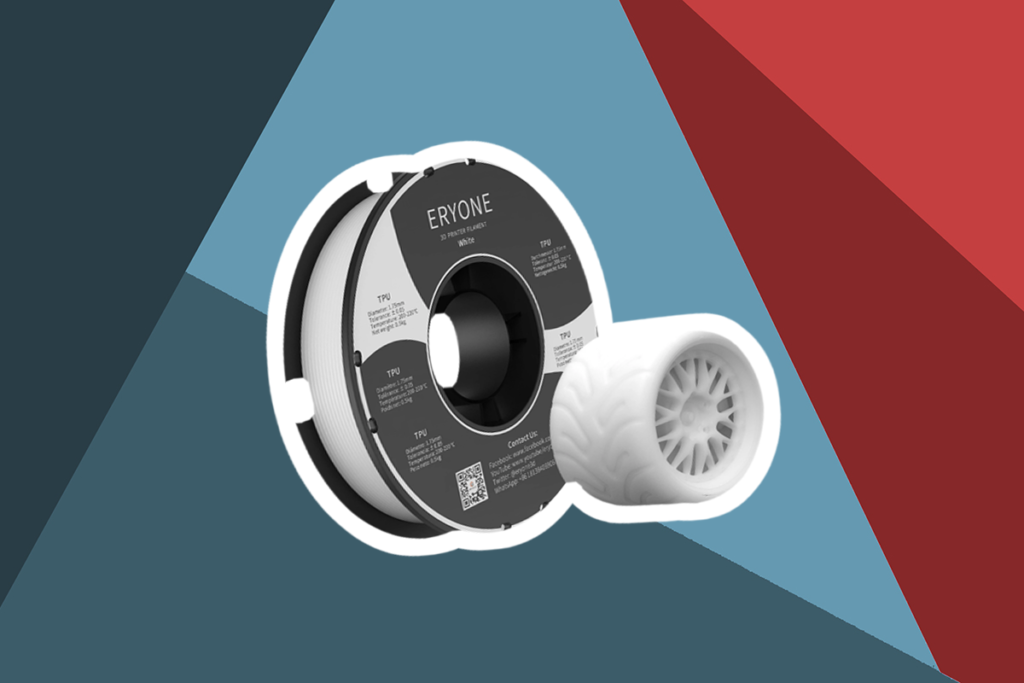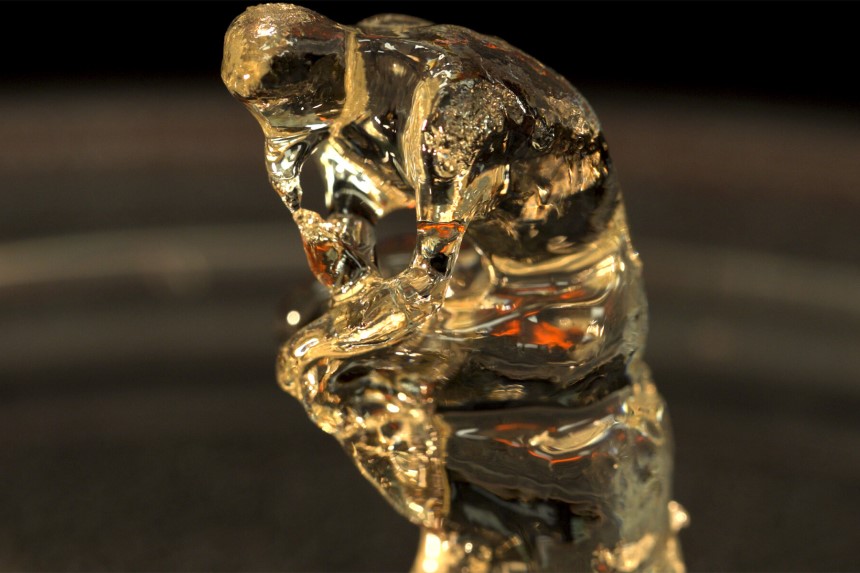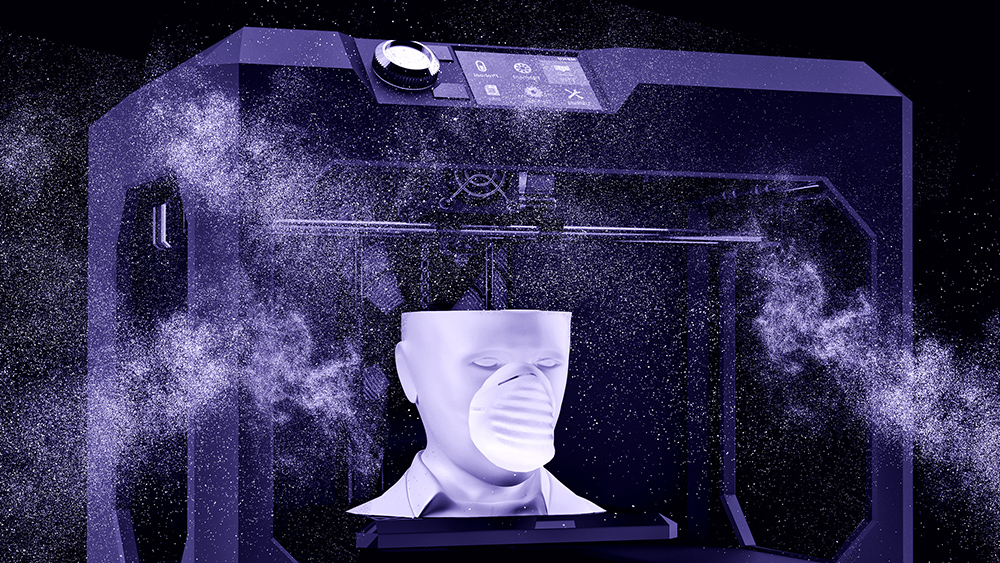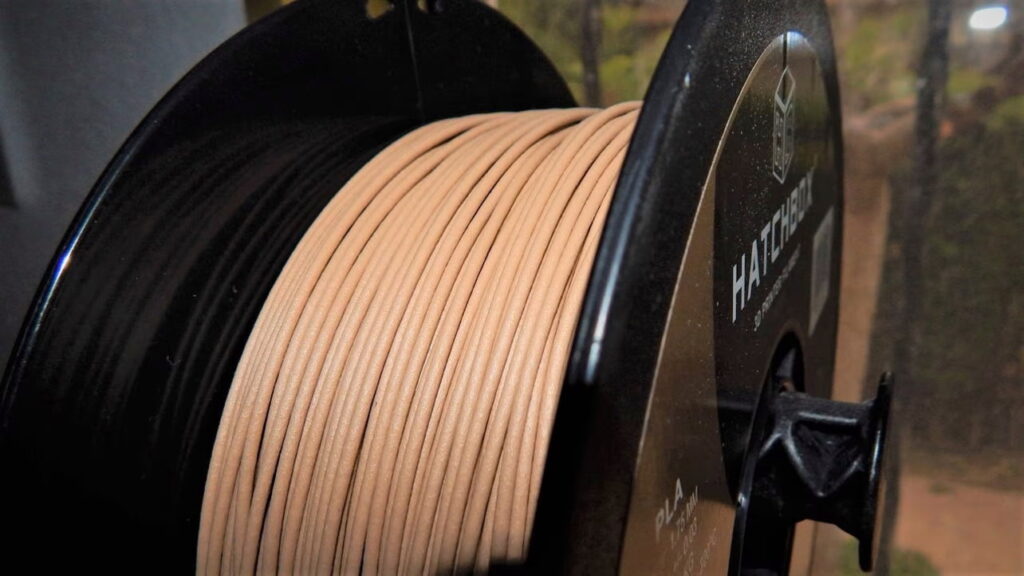

If you take a closer look at UV resin containers and packages, you’ll note they always include precautions on the back on how the material should be handled. You might even find similar precautions in the instruction manual for your resin 3D printer. This raises questions on the safety of using the material, i.e., is UV resin toxic, and if so, what can be done to keep yourself safe while working with the material? Ultimately uncured UV resin is toxic, although the same cannot be said of cured resin. Below there’s information on the harmful effects of the resin on humans, the environment, and what you should do to protect yourself.
Notably, there’s not enough research done on uncured UV resin to determine why it’s toxic. After all, 3D printing as a whole hasn’t been around for very long. However, it’s known to penetrate easily through the skin with physical repercussions down the line.
Additionally, there are physical manifestations and side effects of breathing in the vapors from the uncured substance. As such, the only conclusion is that it is, in fact, toxic. However, as mentioned above, once you pass it through a large resin 3D printer and cure it, touching it shouldn’t be a problem.
Curing UV resin typically involves determining the right infill pattern for the print and hardening the print by exposing the resin to UV light. Finally, there’s the cleanup. The hardening of the resin makes it inert and keeps toxins from leaking from the print. In fact, once cured, some 3D prints that use UV resin are considered food-safe. This doesn’t apply to all UV resins, and you should work to find out if yours is certified food-safe before you put your food on it.
Secondly, cleaning gets rid of any liquid resin left behind alongside the fumes, but you have to be careful during the cleaning process as well.
Ultimately, the toxicity means you have to handle the liquid carefully to ensure the safety of both you and your environment. However, before that, here’s a look at the potentially harmful effects of exposure to the substance.
Perhaps the scariest aspect of humans coming into contact with resin is that the effects aren’t immediate. In fact, the after-effects of resin exposure can be likened to an allergic reaction. According to the American Academy of Allergy Asthma & Immunology Trusted Source Allergic Reaction | AAAAI Allergies often bring to mind sneezing, a runny nose or watery eyes. While these are symptoms of some types of allergic disease, it’s important to understand that an allergic reaction is actually a result of a chain reaction that begins in your genes and is expressed by your immune system. www.aaaai.org , allergic reactions happen when your immune system reacts to invaders in the body by producing Immunoglobulin E antibodies. These antibodies then trigger the release of chemicals in your body that then cause an allergic reaction.
As mentioned above, liquid UV resin easily penetrates through the skin. As such, the body’s immune system may appropriately see the chemicals as invaders and react accordingly. This may also explain why the effects of exposure are not often immediate. Users of 3D printers have to repeatedly expose themselves to liquid UV resin before they’re hit with the full brunt of health effects.
Nevertheless, the effects will also be determined by the type of exposure. For instance, if you’re consistently exposed to UV resin vapors, the harmful effects could include headaches and some respiratory problems, including swelling airways, trouble breathing, as well as pain and irritation in your airways.
Your eyes could also be affected by vapors resulting in them being watery, puffy, and you could also experience a burning sensation. As such, for those wondering whether UV resin is toxic to breathe, the answer is a resounding yes.
As for the skin, the physical manifestations include pimples, wheals, redness, pain, burning or itching sensations, and overall extensive inflammatory reactions. Notably, once you’ve gotten to this point, it’s best to give up on UV resin 3D printing and maybe opt for filament printing. In fact, when comparing 3D printer resin and filament printing, the latter is considered easier to handle and less toxic in some circles since you don’t come into contact with liquid resin. That said, it still produces fumes.
Nevertheless, the damage from repeated exposure to UV resin is irreversible, and your skin and body will forever be sensitive to the substance making it impossible to work with. Also, these are just the short-term effects, although, as mentioned above, not much research has been carried out to determine the long-term consequences.
If this isn’t enough to discourage you from using UV resin, users recommend the Phrozen SC-801 Clear Resin for transparent prints. It’s a highly transparent resin that’s easy to clean and doesn’t yellow as easily during post-curing.
Resin is just as harmful or even more so to the environment as compared to human beings. This includes both plants and animals. One example of this is the relationship between UV resin and aquatic life forms such as fish. The molecules in the resin negatively affect the neurological functions of the fish and can eventually lead to their death. As such, it’s a bad idea to dispose of it near rivers, ponds, lakes e.t.c.
The worst part is you don’t have to do much to experience the harmful effects of the resin in your environment. A bit of negligence while you handle your 3D printing projects could lead to the decimation of the ecosystem near your workstation.
Ideally, 3D printers should be used in hermetically sealed environments. However, a lot of home 3D printers are used in makeshift workstations in the home. This opens up the risk of spills and drips that might eventually lead to some of the resin making it outdoors. The good thing is modern UV resin 3D printers tend to have UV seals that keep both the light and resin contained during the printing process.
According to reviewers, the QIDI Technology Resin Printer is a dependable device with a UV seal incorporated. The device is a large-format printer with aluminum CNC technology on the inside. Notably, how you handle the resin and resin containers before, during, and after use, as well as your tools, also matters and can lead to spills and environmental contamination.
Now that you know how toxic UV resin is, here are a few pointers on use to keep you and your environment safe.
Being that UV resin is toxic, you have to consistently use safety practices to ensure you don’t harm yourself, your loved ones, or the environment even as you pursue your 3D printing hobby. You can find a few pointers on how to do that in the sections below.

First, start by reading the safety instructions on your resin packages and even on the 3D printer. According to reviewers, one of the safest 3D resin printers in the market is the ELEGOO Saturn MSLA 3D Printer UV. It’s also quite effective with a fast printing speed and higher precision. This will make sure you’re up to date with any changes included in the safety instructions. Furthermore, it serves as a reminder of what you should do while using the material.
Notably, the three main points of entry into the human body for UV resin are the skin, nose, and eyes, and these are the areas you’ll focus on protecting. Start by wearing personal protective equipment or PPEs. This includes chemical-resistant gloves since your hands will be in consistent contact with the resin.
Get some chemical-resistant goggles as well. As for the overalls, they should be disposable in addition to being big enough to cover your arms, neck, torso, and legs completely. You don’t want to cover up using ordinary clothes since you clean them in the washer regularly. As such, any resin that spills on them may eventually end up being drained into the sewerage system, which can be harmful to the environment.
Next, wear a respirator so you don’t breathe any fumes escaping the machine or the bottle as you pour the resin. That said, you should also strive to work in a well-ventilated area to prevent the accumulation of fumes. At the same time, it should be in a locked room to prevent your kids, pets, and other loved ones from accidentally walking in without any protective gear.
Once you’re done curing a model, you need to drain it of any residual liquid resin on the surface. Thankfully, most modern 3D printing machines allow you to tilt the build plate to make this happen.
Also, use the appropriate cleaning fluid for your builds. This is also a major reason for reading the instructions. Notably, isopropanol is often the best cleaning fluid, although you might also encounter washable water resin as well. The print should be rinsed in the fluid at least twice, and a soft brush should be used to clean the hard-to-reach areas.
You can even use tissues to wipe off the residual resin. Keep a sealable trash bag close by for the tissues if you choose to do it. All these steps ensure you don’t come into contact with the UV resin before, during, and after printing. Next, a look into how you protect the environment from the resin.
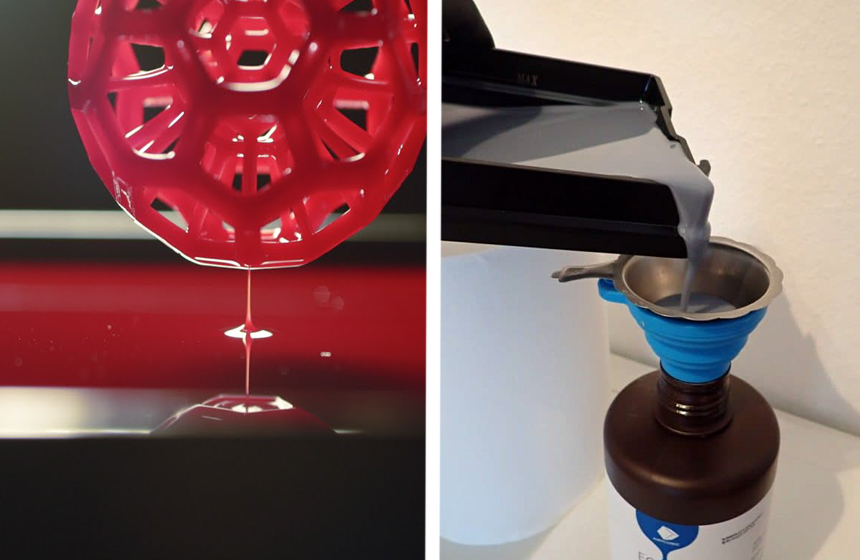
Steady hands are an asset, and you should strive to keep the substance from dripping onto any surface not meant for it. This includes even your worktable as then you’ll have to clean it, which can lead to runoff of the resin into the environment.
When using tools, ensure the drippings go back into the resin containers and wash them in the appropriate cleaning fluid before storage. Some of the things mentioned above, such as keeping a sealable trash bag and draining the prints, can help keep the resin contained.
You also need to be aware of appropriate disposal techniques as you can’t just throw the resin in the trash and call it a day. This includes even the resin on the tissues in the trash bags mentioned above. An efficient way to handle the waste is to hand it over to a professional waste disposal service in well-marked bags and containers. This is, of course, different from your regular trash collection service and will likely cost you a pretty penny.
The alternative is to cure the resin and then dispose of it in the trash, although this works only with residual resin. As mentioned above, curing it makes it inert, and therefore throwing it in the garbage isn’t a problem.
Also notable is that there is an appropriate time frame for curing your resin, and if you go past it, you risk breaking down the hardened resin again. Consequently, the broken down molecules may leach into the environment and cause issues.
Lastly, don’t leave your 3D prints exposed to UV light. This is the same concept as over curing, which involves over-exposure to UV light. Consequently, the sun can break down the molecules of the print over time and lead to problems down the line after the molecules have leached into the surroundings. For these reasons, resin jewelry may not be a good idea either.
Synthetic UV resin is oil-based. However, the plant-based resin is another viable alternative and should be a lot safer. Notably, it’s made from castor oil which, according to WebMD Trusted Source CASTOR BEAN: Overview, Uses, Side Effects, Precautions, Interactions, Dosing and Reviews The hull of the castor seed contains a deadly poison called ricin. This is why the hull must be removed before use. Ricin has been tested as a chemical warfare agent. Weapons-grade ricin is purified and produced in particles that are so small they can be breathed in. www.webmd.com , has been used in the medical field for a long time and can even be used to stimulate labor.
Another alternative is eSun, which combines plant-based and oil-based resins. Lastly, there’s 3Dresyns for SLA. Nevertheless, these options aren’t as safe as plant-based resins, although they are much better than synthetic UV resins. Also, using these alternatives doesn’t mean you should stop using the precautions stated above.
So, is UV resin toxic? Yes, it is, in fact, toxic, although that might not be the case after curing. Consequently, handling the liquid version should incorporate some precautions, so you protect yourself, your loved ones, and the environment in general. Of course, you can always opt for filament 3D printing instead to avoid the hassle of some of these precautions.

